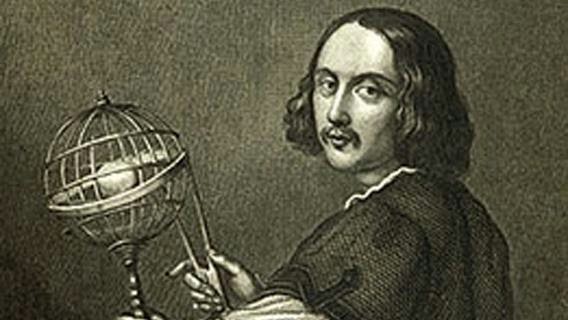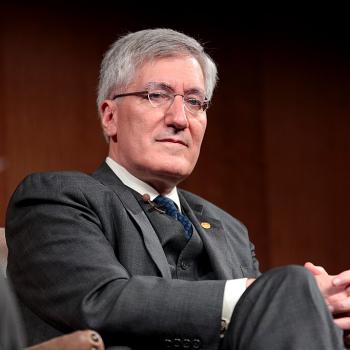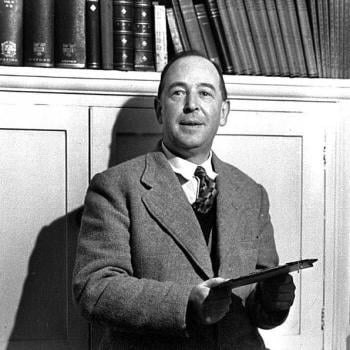
Martin Luther was not the only faculty member of the University of Wittenberg to spark a revolution. His colleague, George Joachim Rheticus, was largely responsible for promulgating the insight of Copernicus, that the earth was not the center of the universe but rather revolved around the sun. In fact, both professors were promoting Copernican revolutions, one in science and the other in theology.
Rheticus was brought into the faculty at Wittenberg by Philip Melanchthon, the Chancellor, as a professor of mathematics. He served at the same time that Luther was a professor of theology. Rheticus learned about the work of Polish astronomer Nicolas Copernicus and wanted to study under him. Melanchthon gave him leave to do so. Rheticus became the only student Copernicus ever had, and he made himself indispensible. Rheticus wrote an early account of Copernicus’s theory that the earth orbited the sun along with the other planets. He then talked Duke Albert of Prussia into giving permission for the publication of the ailing Copernicus’s controversial work on the subject, De Revolutionibus. . . .(“On the Revolutions of the Heavenly Spheres.”) Rheticus edited Copernicus’s manuscript, added his own trigonometric tables, and supervised its publication. The year after De Revolutionibus was released, Copernicus died. But Rheticus played a key role in the Copernican revolution.
Rheticus made other contributions: to trigonometry, map-making, the invention of navigation devices. He later joined the theology faculty at the University of Leipzig, again with Melanchthon’s help. He wrote a treatise reconciling Copernican cosmology with Scripture. His career came to a bad end, though, when he was caught having a homosexual relationship with a student. He was convicted of rape and exiled from Leipzig. He worked as a physician in Vienna, where he continued his scientific and mathematical work. (See this biographical treatment and his Wikipedia article.)
According to the Ptolomaic model of the universe, a construction of the classical world, the earth was the center of the universe. Which meant that man was the center of the universe. The Copernican model displaced human beings from their privileged position. This was and remains traumatic. But the Ptolomaic model that was taken for granted throughout the Middle Ages was profoundly humanistic.
The same could be said of medieval theology, which exalted human reason, human willpower, human merit, and human authority in the Church.
Luther countered this human-centered theology with a God-centered theology: Our salvation is God’s action, not our own. It comes from Christ’s merit, not our own. Our authority is God’s Word, not our own reason or human popes.
Luther’s reformation was also a kind of Copernican revolution.
True, Luther never accepted his colleague’s cosmology. But the poets of the Reformation seem to have recognized the symbolic and imaginative value of the new science.
The arch-Protestant poet John Milton was a friend of Galileo’s, the scientist who provided empirical evidence for Copernicus’s theory. Milton visited Galileo while he was under a Vatican-imposed house arrest. In Paradise Lost, Milton presents Hell as something of another planet, rather than as the center of the earth as Dante did.
The great Reformation poet George Herbert played a Rheticus-like role with Sir Francis Bacon, the father of the scientific method. Bacon said that he never published anything without first running it past his friend the Rev. Herbert, who served as his editor and literary executor.
But it was the great medieval poet Dante who both exploited the symbolic significance of the Ptolomaic model of the universe and discerned its theological flaw. In the Paradiso, after the pilgrim and Beatrice soar through the planetary spheres and break through into deep Heaven, Dante looks back at the universe they have left behind. The earth looks exceedingly small next to the wonders of Heaven. But it isn’t just that the earth is the center and that man is the center. In terms of Dante’s symbolism in the Inferno, Hell is the center of the universe! Whereupon the poet looks again and in a re-imagining of the cosmos more radical than that of Copernicus he turns the universe inside out. He sees that the spheres are actually revolving, in reverse order, around an intensely bright point of light. The universe is revolving around its true center: the Triune God. Hell is actually the farthest away from Him. And earth is only slightly closer. But God is the true center of all existence.
Illustration: This old print is sometimes identified as Rheticus and sometimes as Copernicus. Public Domain.












